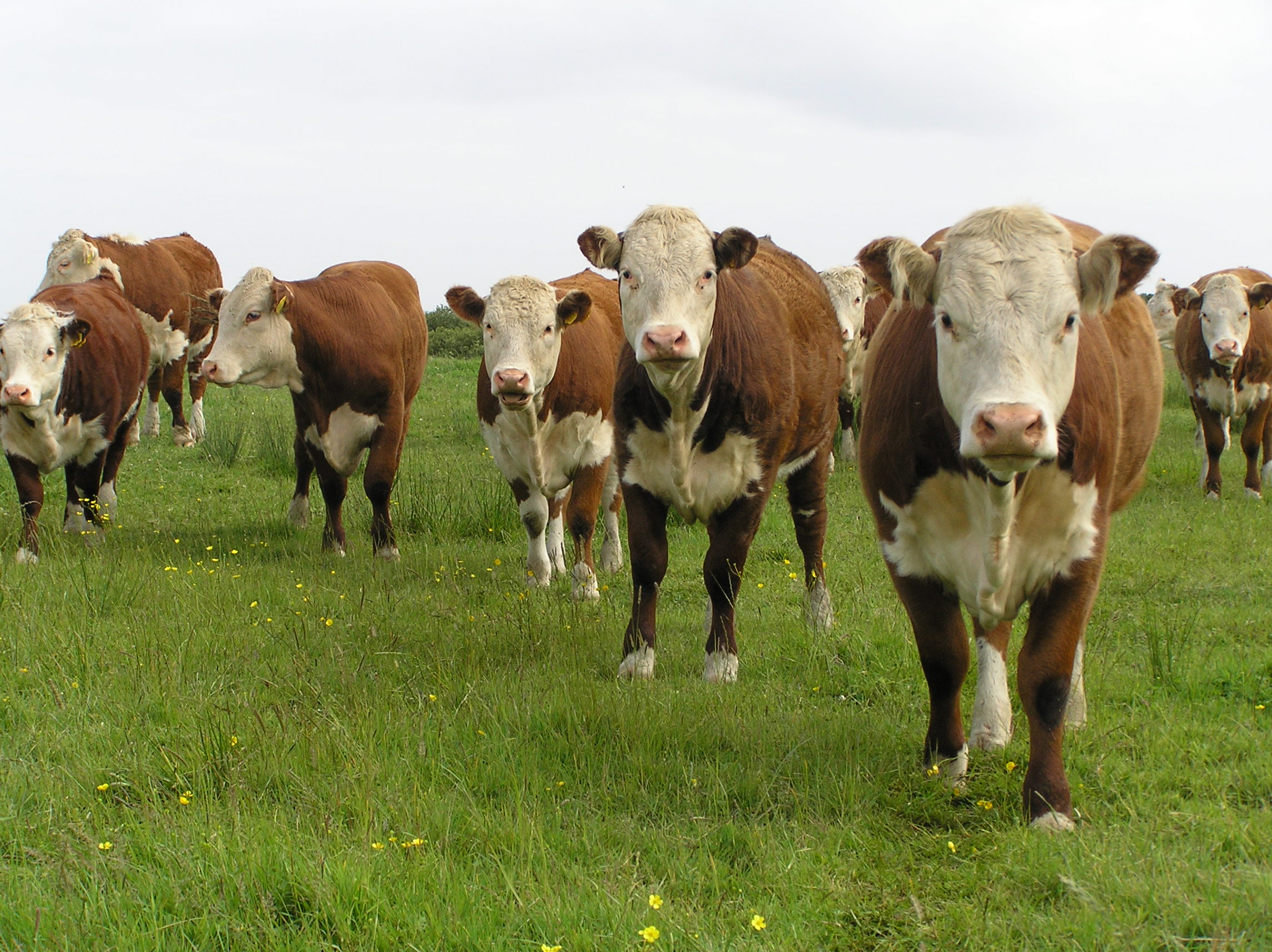
Agricultural News
Johnes Disease Control Program Updated- Designed to Be Less Cumbersome for Cattle Producers
Tue, 05 Oct 2010 8:38:01 CDT
 Dairy and beef producers and bovine veterinarians are encouraged to check out the revised Uniform Program Standards for the Voluntary Bovine Johne's Disease Control Program developed by USDA in conjunction with the U.S. Animal Health Association thatwent into effect Sept 1. The good news for producers and veterinarians is that theupdated Control Program is less cumbersome, has three levels of producer involvement and has an easier-to-understand-and-follow system for classifying herds that have a lower risk of transmitting Mycobacterium aviumparatuberculosis (MAP), the bacteria known to cause Johne's disease.
Dairy and beef producers and bovine veterinarians are encouraged to check out the revised Uniform Program Standards for the Voluntary Bovine Johne's Disease Control Program developed by USDA in conjunction with the U.S. Animal Health Association thatwent into effect Sept 1. The good news for producers and veterinarians is that theupdated Control Program is less cumbersome, has three levels of producer involvement and has an easier-to-understand-and-follow system for classifying herds that have a lower risk of transmitting Mycobacterium aviumparatuberculosis (MAP), the bacteria known to cause Johne's disease.
"All producers participating in the revised Voluntary Bovine Johne's Disease Control Program will start with the education component, then they can choose whether to proceed to the management component that incorporates best management practices or move on to the classification component that incorporates best management strategies and testing," states Dr. Michael Carter,National Johne's Disease Control Program Coordinator, National Center for Animal Health Programs, USDA-APHIS-VS."This is a progressive program, and producers can determine their level of involvement. The more producers know about and test for Johne's disease, the better for them and their customers."
When asked why dairy and beef producers should participate in the Voluntary Bovine Johne's Disease Control Program, Dr. Carter stressed that the incidence of Johne'sdisease in dairy and beef herds can be reduced significantly when producers know about Johne's disease and implement measures-including testing-to reduce the transmission of MAP. He pointed out that Johne's disease is estimated to be present in 68 percent of U.S. dairy operations and eight out of 100 U.S. beef herds. A National Animal Health Monitoring Systems study found that infected dairy herds experience an average loss of $40 per cow in herds with a low Johne's disease clinical cull rate while herds with a high Johne's disease clinical cull rate lost on average of $227 per cow. Beef cows clinically infected with Johne's disease produce less milk resulting in lighter calves at weaning, and infected cows can be slower to breed back.
"The most significant change in the updated Voluntary Bovine Johne's Disease Control Program is the new six-level testing classification system," adds Dr. Elisabeth Patton, chairman of U.S. Animal Health Association's Johne's Disease Committee. "Producers who participate in the testing component of the Program will find a new six-level classification system that has specific criteria for different sizes of herds: 1-99 head, 100-199 head, 200-299 head and more than 300 head. A significant amount of thought and work went into the development of this new six-level classification system to address concerns with the previous system and to improve the accuracy of herd classification."
To learn more about Johne's disease or to read the revised Uniform Program Standards for the Voluntary Bovine Johne's Disease Control Program-September 2010 in full, click here for the official Johne's Disease website.
WebReadyTM Powered by WireReady® NSI
Top Agricultural News
More Headlines...



















